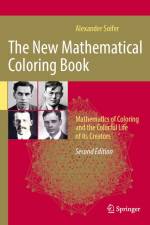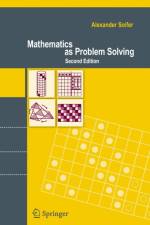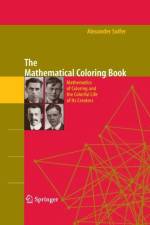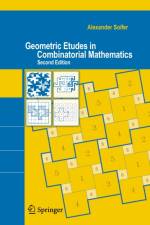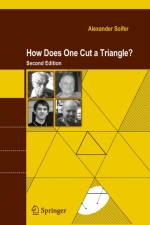av Alexander Soifer
2 247
The New Mathematical Coloring Book (TNMCB) includes striking results of the past 15-year renaissance that produced new approaches, advances, and solutions to problems from the first edition. A large part of the new edition ¿Ask what your computer can do for you,¿ presents the recent breakthrough by Aubrey de Grey and works by Marijn Heule, Jaan Parts, Geoffrey Exoo, and Dan Ismailescu. TNMCB introduces new open problems and conjectures that will pave the way to the future keeping the book in the center of the field. TNMCB presents mathematics of coloring as an evolution of ideas, with biographies of their creators and historical setting of the world around them, and the world around us.A new thing in the world at the time, TMCB I is now joined by a colossal sibling containing more than twice as much of what only Alexander Soifer can deliver: an interweaving of mathematics with history and biography, well-seasoned with controversy and opinion. ¿Peter D. Johnson, Jr.Auburn UniversityLike TMCB I, TMCB II is a unique combination of Mathematics, History, and Biography written by a skilled journalist who has been intimately involved with the story for the last half-century. ¿The nature of the subject makes much of the material accessible to students, but also of interest to working Mathematicians. ¿ In addition to learning some wonderful Mathematics, students will learn to appreciate the influences of Paul Erd¿s, Ron Graham, and others.¿Geoffrey ExooIndiana State UniversityThe beautiful and unique Mathematical coloring book of Alexander Soifer is another case of ¿good mathematics¿, containing a lot of similar examples (it is not by chance that Szemerédi¿s Theorem story is included as well) and presenting mathematics as both a science and an art¿¿Peter MihókMathematical Reviews, MathSciNetA postman came to the door with a copy of the masterpiece of the century. I thank you and the mathematics community should thank you for years to come. You have set a standard for writing about mathematics and mathematicians that will be hard to match.¿ Harold W. KuhnPrinceton UniversityI have never encountered a book of this kind. The best description of it I can give is that it is a mystery novel¿ I found it hard to stop reading before I finished (in two days) the whole text. Soifer engages the reader's attention not only mathematically, but emotionally and esthetically. May you enjoy the book as much as I did!¿ Branko GrünbaumUniversity of WashingtonI am in absolute awe of your 2008 book.¿Aubrey D.N.J. de GreyLEV Foundation

